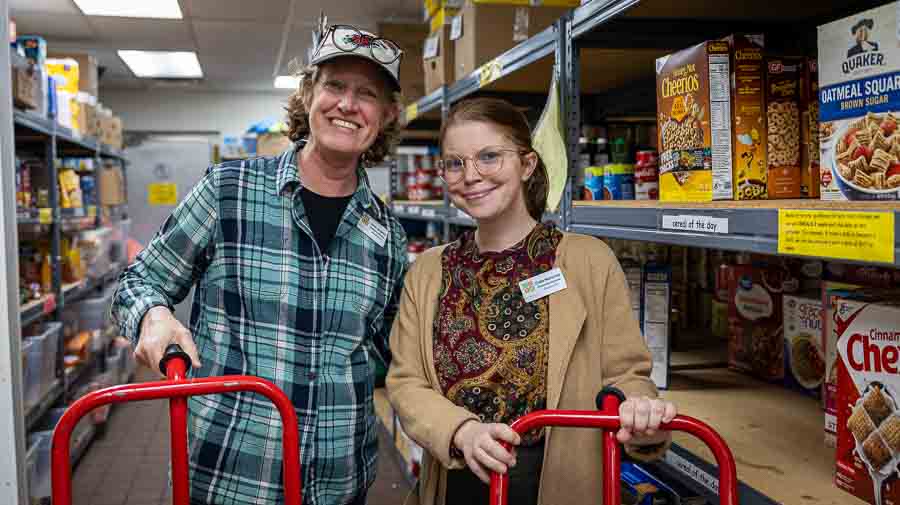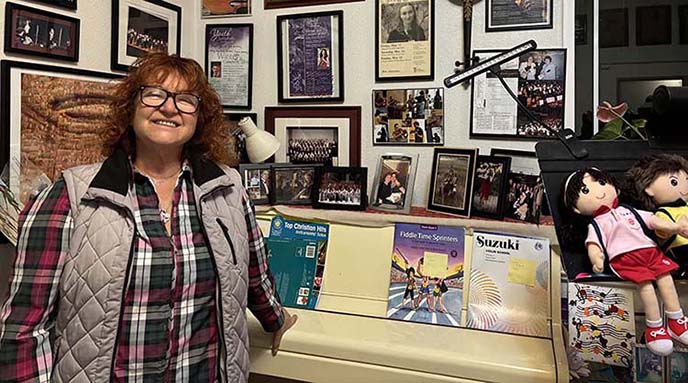In the years since the firestorm of 2020, we have learned lessons in how to harden homes, how to regroup after disaster and how to rebuild
By Rep. Pam Marsh
Sept. 8 marks five years since the 2020 wildfires that scoured the Oregon landscape, torching a million acres of forest and destroying approximately 4,000 homes in multiple communities. Of the homes lost, about 2,300 were in my legislative district, tucked in the small towns of Talent and Phoenix and the unincorporated areas in between, and incinerated in the Almeda Fire.
No one who saw those fires up close has forgotten the confusion, disorientation and despair that marked the days and weeks that followed. Five years later, we are still struggling to help every family that was displaced by fire return to their beloved communities, and the anniversary is a good moment to take stock. This was Oregon’s worst disaster, but not our last, so the lessons matter.
Here’s what I’ve learned these past five years:
Recovery is local
In truth, before the fires I never worried much about disaster. If I thought about it at all, I assumed that big institutions like FEMA would swoop in after the fact and take care of everyone. In fact, FEMA did show up, and we benefited from some of the agency’s work. However, FEMA brought its own set of problems, including remarkable disinterest in the long-term outcomes of the people it was supposed to serve.
What saved us were the local nonprofits, churches, businesses and other entities that stepped up in crisis. Few if any of these organizations had formal training in disaster response and recovery. Unlike FEMA, they had trusted relationships with the community.
Within hours of the fire, staff and teachers from the Phoenix-Talent School District phoned nearly every family in the district to find out where they were and what they needed. Talent Maker City cleared the parking lot in front of its building and set up aid stations. Restaurant owners prepared food that was ferried on bicycle to people camped in the rubble of destroyed neighborhoods.
Over the years, crisis response shifted into support for long-term recovery and resilience. Coalición Fortaleza led a community-driven project to understand the wildfire loss and damage within our Latinx families that resulted in development of a cooperatively owned manufactured home park. Rogue Food Unites pivoted from feeding survivors to a focus on regional food security. Talent Maker City evolved to programming that enables young and old community members to develop hands-on skills that build confidence, self-efficacy and connection.
These very local organizations and many, many others fueled our recovery. They — not FEMA, not any big disaster relief entity — will be the trusted places people go for help should disaster strike again.
Our nonprofits clearly understand this mission. In 2023, the Legislature allocated $10 million to help community organizations and local governments develop the skills, facilities and organizational capacity critical to response and recovery. Seven hundred applied! At a time of accelerating disruption, we need to double down on building the everyday community resilience that will steel us when we face the next disaster.
We must think differently about housing
Of the homes lost in the Almeda Fire, 1,500 were manufactured homes in 18 or 19 parks that were fully or largely destroyed. Survivors with single-family homes and decent insurance coverage were mostly able to rebuild brick-and-mortar structures. But the loss of so many manufactured home parks forced us to think differently about how to help those residents.
Some residents were able to use the state’s manufactured home replacement program, which we modified specific to wildfire replacement. We passed legislation to ensure that parks could rebuild and to allow the placement of modular units (not just manufactured homes) within parks.
But we needed lots of homes, and quickly, and our Oregon industries could not keep up.
In response, Oregon Housing and Community Services ordered 140 modular homes from a manufacturer in Idaho. While it was the right, bold idea, the execution fell short. When delivered, homes failed to meet building code standards and could not be placed in the new parks that were waiting for them.
It was clear that we needed to invest upstream in the state’s own factory-based production facilities. We needed houses manufactured by Oregonians in our own state where we could watch construction and know that homes were built to an excellent standard.
Accordingly, in 2022 we allocated funding to St. Vincent de Paul of Lane County for the startup of a new manufactured home production plant to produce affordable fire-resistant homes for low-income Oregonians. A year later, the state invested in four modular home factories across the state. Factories that received grants promised to increase production and to build temporary or permanent modular homes for state purchase if needed in a future disaster.
The modular facilities have already contributed to the 2020 recovery. InteliFab, a facility in Klamath Falls, is producing 120 homes for the reconstruction of Royal Oaks Mobile Manor in Phoenix. Blazer Industries in Aumsville has built homes for recovery in the McKenzie Valley.
Brick-and-mortar construction will always remain our dominant approach to housing, but conventional approaches take much too long after a disaster. With robust modular and manufactured housing industries, Oregon is now ready to provide temporary or permanent housing after a fire or other catastrophe.
Our resilience runs deep
This has been a period of great suffering and disruption for many survivors. Indeed, some families left the community after the fire, driven by economics and the inability to wait for recovery.
And yet, a few weeks ago I spoke with a woman who was able to use federal wildfire funding to move into a new home in Bear Creek Mobile Home Park. A week ago, I met another woman who was about to spend her first night in her new home at Medford’s New Spirit Village neighborhood. And a few days ago, at a local housing fair, I spoke with a survivor who has been approved for down payment assistance and is assessing her options.
All these women told stories of struggle, disappointment and near hopelessness. Yet somehow, they persisted. Now they are settling into new lives in homes and neighborhoods unimagined a few years ago.
Individuals, neighborhoods and communities are confronting the dangers of living in a region at high risk for wildfire. In August, I visited with survivors who returned to establish new homes in a manufactured park destroyed in 2020. Those residents could have picked up and moved anywhere else, but instead they chose to come back and proactively face the risks of fire. That park is now one of the first anywhere to be certified as Firewise — a remarkable achievement for residents and management.
Home hardening and defensible space work is being implemented across the region and state. Early reports from the Flat Fire in Central Oregon suggest that many homes were saved in that blaze because they had been hardened in some way. I’m hopeful that information gleaned there will help us learn what worked. Eventually, data accumulated should persuade the insurance industry to provide premium incentives that recognize a homeowner’s upgrades.
To reinforce these efforts, earlier this year the Legislature established permanent funding for wildfire mitigation to continue efforts to keep homes and neighborhoods as protected as possible and to stabilize the landscapes that pose high risks. We also implemented a home hardening program to help low-income individuals in high-risk areas with improvements that will help protect their homes from fire. When the worst happens, the fund will incentivize survivors who have lost homes to rebuild using fire-resistant materials and design.
Five years ago, as we looked at the still smoking piles of debris that stretched for miles, it was hard to imagine how we would move forward. What happened next was a display of phenomenal determination and courage. Families who had lost everything called on profound emotional reserves and community support and rebuilt. Neighbors bonded together and learned what it takes to make a neighborhood fire-resistant. Local governments identified evacuation routes, expedited permits and oversaw community recovery projects.
Nothing about the post-fire experience should be sugarcoated — but it turns out we are far more able to face down disaster than we could have known.
Moving forward
Shortly after the fires we were told by other communities that had experienced something similar that recovery would take five to 10 years. A timeline that stretched so far into the future seemed incomprehensible. And yet, here we are, five years later — older, wiser, a little exhausted, and having learned so much about ourselves and each other. I remain forever proud and grateful for the tenacity and courage I have witnessed day in and day out. We are a community that has proved our mettle.
Ashland resident Pam Marsh is the state representative for House District 5.
Ashland.news welcomes Viewpoint submissions of 500-700 words. Viewpoints may be emailed to [email protected] or submitted through the “Article Submission Form” link at the bottom right corner of the home page. Please include your name and city of residence with your Viewpoint (which will be published) and, in case we have a question, your contact information (which won’t be published unless you say it’s OK).




















